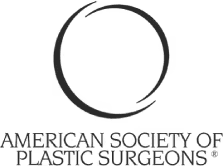FACELIFT
10 Most Effective Tips for Minimising and Healing Face Lift Scars

If you’re considering a facelift to restore a more youthful appearance and address sagging around your nose, mouth, and chin, it’s natural to have concerns about potential scarring.
Dr Faisal Salim, our esteemed board-certified plastic surgeon in Dubai, understands these concerns and is here to share expert tips on minimising and healing facelift scars. In this comprehensive guide, we’ll talk about various aspects of face lift scars, from understanding the types of scars to professional treatments and scar management timelines.
Understanding Facelift Scars
Embarking on a facelift journey is a transformative experience, and while the goal is a rejuvenated appearance, the concern about potential scarring often lingers.
Facelift scars result from incisions during surgery. There are typically two main types of facelifts: traditional and limited incision. In significant cases, Dr Faisal uses the deep plane face lift technique for minimal scarring.
Skilled surgeons like Dr Faisal Salim focus on achieving natural-looking results with minimal scar visibility. Key factors influencing scar appearance include incision placement, the patient’s skin, their age, and healing ability.
Fortunately, some proactive measures can be taken to minimise and promote the healing of facelift scars. In this guide, we’ll explore 10 expert tips that can empower you to navigate the delicate process of scar care while helping you recover and heal facelift surgery scars fast.
- Careful Surgeon Selection:
The foundation for minimising facelift scars starts with selecting a skilled and experienced plastic surgeon. Look for a board-certified professional like Dr Faisal with specific expertise in facial plastic surgery. Ask about their approach to incision placement and view before-and-after photos to assess their track record in achieving natural-looking results.
Transparent Communication:
Open communication with your surgeon is key. During consultations, express your concerns about scarring to Dr Faisal, and he will what to expect for the postoperative period.
He takes time to address your apprehensions and provide detailed information on scar management is an invaluable partner in your journey.
Preoperative Preparation:
Follow preoperative instructions meticulously. This may involve active and conscious lifestyle choices while avoiding smoking and certain medications that could hinder the healing process. By optimising your overall health before the procedure, you create a favourable environment for successful scar minimisation.
Strategic Incision Placement:
The artistry of a facelift extends to the placement of incisions. Dr Faisal strategically hides incisions in areas that minimise visibility. He uses the deep plane face lift technique to help minimise scarring. The tension of the lift is on the deep muscles, so less stress is put on the skin, which results in a finer scar.
Understanding the importance of incision placement contributes significantly to achieving discreet scars. Proper incision placement and skilled surgical techniques can minimise the visibility of mid-face lift scars, ensuring a more discreet outcome.
Diligent Postoperative Wound Care:
Following postoperative wound care instructions is crucial for minimising scarring. Use a gentle cleanser to keep incision areas clean, and avoid any actions that may cause additional trauma, such as picking or scratching. Consistent application of recommended topical ointments or creams aids in promoting healing and reducing inflammation.
Sun Shielding:
Protecting your healing skin from harmful UV rays is essential for scar minimisation. Sun exposure can darken scars and impede the overall healing process. Embrace the following sun protection practices:
- Wear a wide hat and sunglasses when outdoors.
- Apply a broad-spectrum sunscreen with a high SPF to your face, including scar areas, and reapply as directed.
- Limit outdoor activities during peak sun hours to avoid sunburn.
Early Introduction of Scar Treatments:
Begin scar treatment early in the recovery process. Silicone scar strips, for instance, can be applied as recommended by your surgeon. These strips create an optimal environment for scar healing by hydrating the tissue and aiding in the reduction of scar visibility.
Professional Scar Treatments:
Explore professional scar treatments to complement your at-home care. Laser therapy is a non-invasive option that breaks down scar tissue and stimulates natural healing. Corticosteroid injections are effective for flattening raised scars and reducing inflammation. Medical-grade skincare products with potent ingredients can further enhance scar texture and appearance.
Follow a Scar Management Timeline:
Understand the phases of scar management to navigate your recovery confidently. In the initial weeks, focus on rest and cleanliness. As scar treatment begins in weeks 2-4, incorporate silicone strips and engage in follow-up check-ins with your surgeon. Active scar management from months 2-6 involves transitioning to specialised scar gels, while the final stages from months 6-12 require continued scar gel application and regular check-ins for ongoing support.
Mindful Lifestyle Choices:
Embrace a healthy lifestyle to support your body’s natural healing process. Maintain proper nutrition, hydration, and overall well-being. A healthy lifestyle contributes to better skin regeneration and overall scar improvement.
Professional Facelift Scar Treatments
Elevating Scar Care to the Next Level
While diligent at-home care forms the foundation of scar management, professional treatments can significantly enhance results and provide enduring benefits. In this section, we’ll elaborate on three key professional facelift scar treatments: Laser Therapy, Corticosteroid Injections, and Medical-Grade Skincare.
Laser Therapy: Precision in Scar Healing
Laser therapy is a cutting-edge, non-invasive technology designed to address facelift scars with precision. This treatment employs focused light beams to break down scar tissue, promoting collagen production and stimulating the skin’s natural healing abilities. The precision of laser therapy allows for targeted scar treatment, minimising scar visibility and improving overall skin texture.
The process involves the penetration of controlled light energy into the scar tissue, triggering biological responses that lead to the restructuring of collagen fibres.
Over time your skin becomes smoother, more even-toned skin. Laser therapy is particularly effective in addressing different types of scar including face lift surgery scars, including those from facelift surgery. It’s essential to undergo laser therapy under the supervision of a qualified professional to ensure optimal results and minimise potential risks.
Corticosteroid Injections: Flattening Raised Scars and Reducing Inflammation
Corticosteroid injections are a specialized treatment aimed at flattening raised scars, such as keloids and hypertrophic scars, often associated with surgical procedures like facelifts. These injections contain powerful anti-inflammatory agents that work to reduce inflammation, leading to a more even skin surface.
The mechanism involves the injection of corticosteroids directly into the raised scar tissue. This process helps break down excess collagen, which is responsible for the elevated appearance of the scar.
Corticosteroid injections are typically administered during the active scar management phase, usually around weeks 2-4 post-surgery. Multiple sessions are required for giving optimal results, and the treatment plan is tailored to each individual’s unique healing response to face lift surgery scars.
Medical-Grade Skincare: Potent Ingredients for Scar Enhancement
Incorporating medical-grade skincare products into your scar care routine can immensely help improve the texture and appearance of facelift scars. These products are specially formulated to provide targeted solutions for scar enhancement.
Medical-grade skincare products often contain active ingredients like retinoids, vitamin C, peptides, and growth factors. These active ingredients work to promote collagen production, reduce hyperpigmentation, and enhance overall skin quality.
When integrated into the scar management routine, these products contribute to the long-term success of scar healing specially the ones from face lift surgery scars. Consult with Dr Faisal to determine the most suitable products for your specific scar type and skin condition.
Your Facelift Scar Management Timeline:
Understanding the phases of scar management is crucial for navigating the recovery journey smoothly. Let’s break down the timeline to elaborate on each phase and highlight the key aspects of care.
Weeks 1-2: Initial Healing – Rest and Recovery
During the first two weeks post-op, the focus is on rest and recovery. Your primary goal is to keep the incision areas clean. It’s normal to experience swelling and bruising during this phase. Following personalised care steps guided by your surgeon is essential to set the foundation for successful scar management.
Weeks 2-4: Scar Treatment Begins – Silicone Scar Strips
Around the two-week mark, scar treatment begins. This involves the introduction of silicone scar strips, a proven method to reduce scar visibility. These strips create an optimal environment for scar healing by hydrating the tissue. Additionally, this phase marks the beginning of follow-up check-ins with your surgeon to monitor progress and adjust the scar care routine based on your individual healing responses.
Months 2-6: Active Scar Management – Transition and Lifestyle Maintenance
As you enter the active scar management phase, swelling and discomfort should subside. It’s an opportune time to transition from silicone strips to specialized scar gel, as recommended by your surgeon. Simultaneously, maintaining a healthy lifestyle becomes crucial. Proper nutrition, hydration, and overall well-being contribute to your skin’s natural repair process, enhancing scar outcomes.
Months 6-12: Final Stages – Faded Scars and Continued Care
By the sixth month, you’ll likely observe significant fading of your facelift scars. However, the scar management journey doesn’t end here. Continuing scar gel application and regular check-ins with your surgeon remain essential. This ongoing care ensures that your scars continue to fade and that any concerns are promptly addressed, providing the finishing touches to your scar management journey.
When Should You Seek Professional Help for Scar Management?
Facelift recovery may be time-consuming for some. Staying vigilant and seeking professional assistance is necessary if you observe concerning signs.
- Raised or Growing Scars
- Pain, Itchiness, or Discomfort
- Persistent Scarring
- Emotional Distress
Minimising and healing facelift scars involves a combination of choosing the right surgeon, diligent pre and post-operative care, sun protection, and professional treatments. By following these tips and maintaining open communication with your surgeon, you can achieve natural-looking results and enjoy the transformative benefits of a facelift with minimal scarring.
If you have further concerns, don’t hesitate to consult bespoke Dr Faisal Salim for the best possible outcome for your facelift results.
FAQs
A: With proper incision placement and expert surgical techniques, skilled surgeons can minimize the visibility of facelift scars. You may consult Dr Faisal Salim- an experienced board-certified plastic surgeon, to achieve natural-looking results.
A: Factors such as incision placement, the patient’s skin type, age, and healing ability play a role in how mid-face lift scars appear. Skilled surgeons take these factors into account to achieve optimal results.
A: Your surgeon will provide guidelines for post-operative care, including when it’s safe to use makeup. It’s essential to follow their recommendations to avoid interfering with the healing process.
A: Yes, medical-grade skincare products containing potent ingredients can significantly improve the appearance of facelift scars. Consult Dr Faisal to determine the most suitable products for your individual needs.
A: The timeline for scar fading varies for each individual. Generally, significant improvement is observed within the first 6-12 months post-surgery. Consistent scar management and professional treatments can enhance the overall results.
A: If you observe increased redness, swelling, or discharge around your incisions, contact your surgeon immediately. Timely intervention can prevent complications and ensure proper healing.








